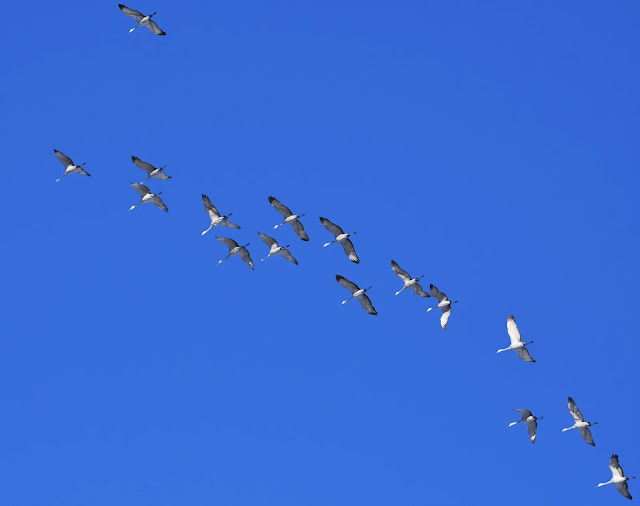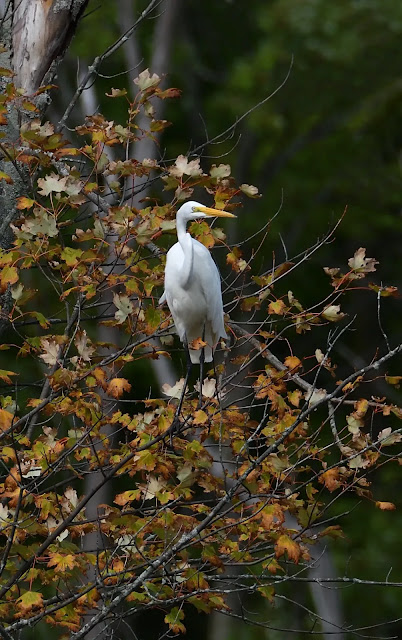Sandhill Crane Migration
A unique and unfamiliar call heard on my walk back from the Wetlands saw me gazing skyward with a puzzled eye. A large V formation of long-necked, broad-winged birds was passing overhead, and they were definitely not Canada geese. With my telephoto lens fully zoomed out, all that I could capture was not quite half of that V formation.
I confirmed another new bird for my list when I returned home, sandhill cranes. A bird that I would not normally come across in my travels, but I guess that a flyby also counts. That sighting left me questioning if it is normal for sandhill cranes to migrate through Ontario in December?
Coyotes are ever-present in the Wetlands, but I have yet to observe them this year. The only giveaway has been their footprints in the newly laid snow.
 |
| Coyote photo from Lakeside Park in April this year. |
The surface of the Wetlands is frozen.
All apart from the odd isolated areas of fast-moving water.
Seed-eating birds are numerous in the trees and bushes that edge the frozen water, but they are difficult to catch on camera. My camouflaged jacket is proving useless against a leafless white backdrop. My movement is easily visible to the many watching eyes, but this is what I have been able to capture so far.
House finches with their supersized beaks. The female.
And the more colourful male.
Dark-eyed juncos are numerous. They flit here and there and are ever so sensitive to the gaze of human eyes.
They more often than not depart with a flash of white from their tail feathers, leaving only the thought of what might have been a good photo.
Goldfinches are regularly heard flying overhead from one feeding location to the next. The bright yellow of the males now fully replaced with a less gaudy set of winter feathers.
Intermixed with the goldfinches is another finch, one that feeds in large talkative groups.
They are redpolls, and they are experts at dangling upside down while feeding.
And of course, there are always black-capped chickadees. They are, without a doubt, the friendliest of Canadian birds.
And are quite capable of handling whatever our Canadian winters can throw at them.
Copyright © scottswildencounters.blogspot.com 2020 Scott Atkinson All Rights Reserved.

















Comments
Post a Comment